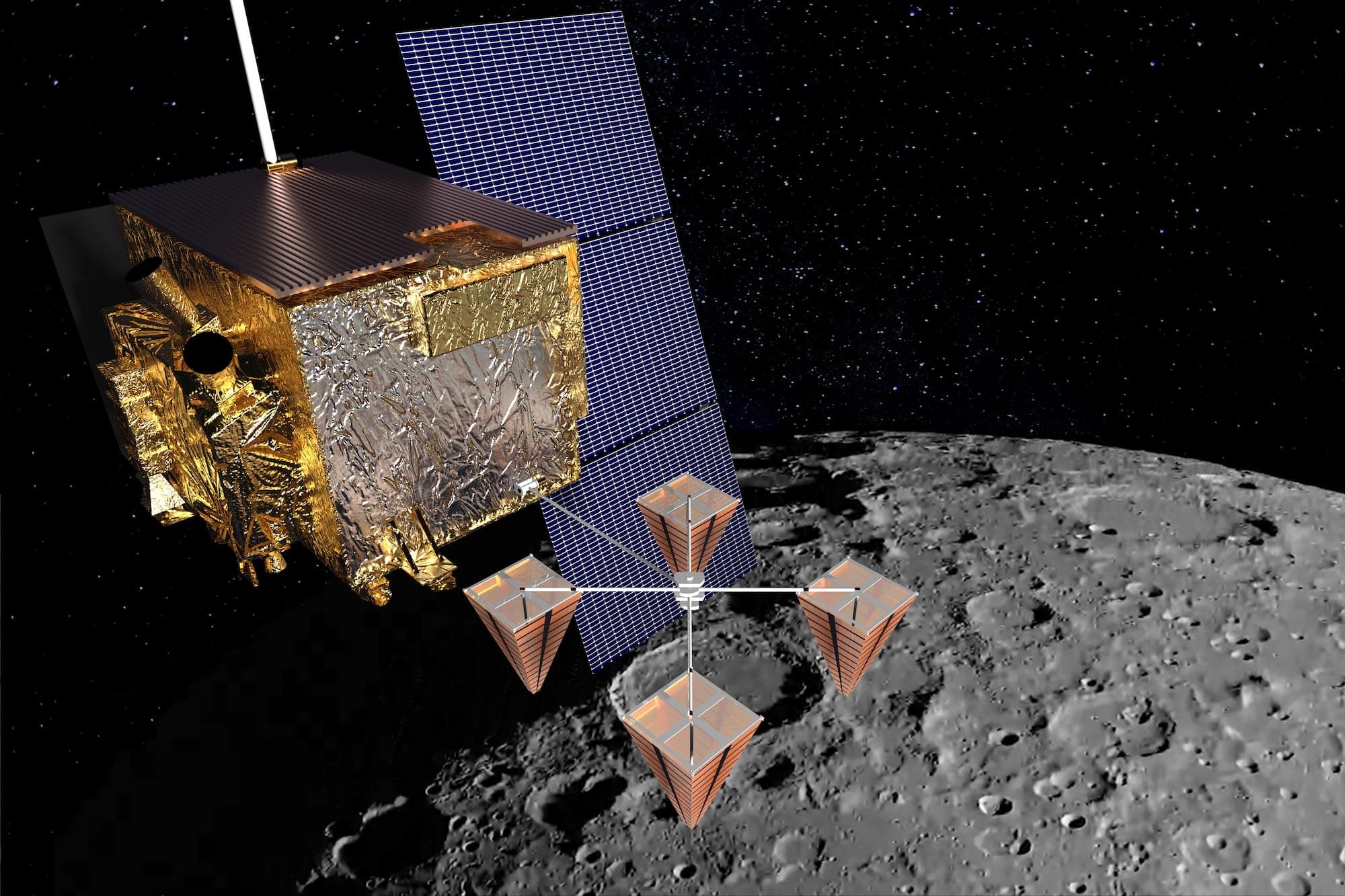As humanity prepares to return to the moon, scientists also have ideas for huge lunar experiments that could revolutionise astrophysics


“Second Variety” is a science fiction novelette by American writer Philip K. Dick, first published in Space Science Fiction magazine, in May 1953. Set in a world where war between the Soviet Union and United Nations has reduced most of the world to a barren wasteland, the story concerns the discovery, by the few remaining soldiers left, that self-replicating robots originally built to assassinate Soviet agents have gained sentience and are now plotting against both sides. It is one of many stories by Dick to examine the implications of nuclear war, particularly after it has destroyed much or all of the planet. The story was adapted into the movie Screamers in 1995. 00:00 Intro 01:03 Peek into the plot 03:33 Self-Replication and Technological Autonomy 06:51 Current Autonomous Warfare Capabilities 10:30 Space Warfare and the Projection of Terrestrial Conflict 13:14 Current State of Space Warfare 15:22 Wrapping Up =============== 🎬 Loitering munitions system WARMATE • Loitering munitions system WARMATE 📙 🇺🇸 Superintelligence: Paths, Dangers, Strategies https://bookshop.org/a/98861/97801987… The Human Terrain Project — PENTAGON’S attempt to understand The Enemy | ENDEVR Documentary
• The Human Terrain Project — PENTAGON’… 📙 🇺🇸 War in the Age of Intelligent Machines https://monoskop.org/images/c/c0/DeLa… =============== Buy the book featured in this video: 📙 🇺🇸 Buy the book Second Variety https://bookshop.org/a/98861/97988883… 🎧 Free Audiobook
• Post-Apocalyptic Story “Second Variet… =============== You can find my take on things summarised in the books I wrote. 📙🇺🇸Chronicles of the Machine — Simulated conversations with Philip K. Dick https://buchshop.bod.ch/chronicles-of… 📙🇺🇸Zero Person: Reframing Autistic Cognition Beyond the Self https://buchshop.bod.ch/zero-person-e… 📙🇩🇪Zero Person: Autistische Kognition jenseits des Selbst https://buchshop.bod.ch/zero-person-e… 📙🇺🇸Book order: The end of the I https://www.bod.ch/buchshop/the-end-o… 📙🇩🇪Book order: Das Ende des Ichs https://www.bod.ch/buchshop/das-ende–… 📙🇺🇸 #actuallyautistic — Living with Autism – A Poetic Exploration of the Spectrum https://buchshop.bod.ch/actuallyautis… =============== Image credits: Freepik.

Scientists are using cutting-edge techniques to track water ice on the Moon—an essential resource for future space missions.
A University of Hawai‘i team utilized ShadowCam to peer into the Moon’s perpetually dark craters, refining estimates of surface ice. Another team introduced a cosmic ray-based method to detect deeply buried ice, a breakthrough in lunar exploration. Both approaches could revolutionize how we locate usable water beyond Earth, with Hawai‘i emerging as a key player in the growing space frontier.
Unlocking lunar water: why ice on the moon matters.
What if humanity’s future isn’t on Earth—or even other planets—but in colossal artificial worlds built in space? In this episode, we explore the O’Neill Cylinder, a visionary space habitat that could house millions, serve as interstellar arks, and transform the cosmos into a network of orbital civilizations. Join us as we dive into the design, potential, and profound societal implications of these Islands in the Sky.
Watch my exclusive video Post-Consciousness Civilizations: https://nebula.tv/videos/isaacarthur–… Nebula using my link for 40% off an annual subscription: https://go.nebula.tv/isaacarthur Get a Lifetime Membership to Nebula for only $300: https://go.nebula.tv/lifetime?ref=isa… Use the link gift.nebula.tv/isaacarthur to give a year of Nebula to a friend for just $30. Visit our Website: http://www.isaacarthur.net Join Nebula: https://go.nebula.tv/isaacarthur Support us on Patreon: / isaacarthur Support us on Subscribestar: https://www.subscribestar.com/isaac-a… Facebook Group:
/ 1,583,992,725,237,264 Reddit:
/ isaacarthur Twitter:
/ isaac_a_arthur on Twitter and RT our future content. SFIA Discord Server:
/ discord Credits: The O’Neill Cylinder Space Habitat: Islands In The Sky Episode 496; April 24, 2025 Written, Produced & Narrated by: Isaac Arthur Edited by: Briana Brownell Graphics: Anthrofuturism, Apogii.uk, Katie Byrne, Jarred Eagley, Jeremy Jozwik, Justin Dixon, Ken York YD Visual, Sergio Botero, Udo Schroeter Select imagery/video supplied by Getty Images Music Courtesy of Epidemic Sound http://epidemicsound.com/creator Markus Junnikkala, “A Fleet Behind the Moon” Phase Shift, “Forest Night” Kai Engel, “Endless Story About Sun and Moon” Chris Zabriskie, “Unfoldment, Revealment”, “A New Day in a New Sector” Taras Harkavyi, “Alpha and…” Stellardrone, “Red Giant”, “Billions and Billions“
Get Nebula using my link for 40% off an annual subscription: https://go.nebula.tv/isaacarthur.
Get a Lifetime Membership to Nebula for only $300: https://go.nebula.tv/lifetime?ref=isa…
Use the link gift.nebula.tv/isaacarthur to give a year of Nebula to a friend for just $30.
Visit our Website: http://www.isaacarthur.net.
Join Nebula: https://go.nebula.tv/isaacarthur.
Support us on Patreon: / isaacarthur.
Support us on Subscribestar: https://www.subscribestar.com/isaac-a…
Facebook Group: / 1583992725237264
Reddit: / isaacarthur.
Twitter: / isaac_a_arthur on Twitter and RT our future content.
SFIA Discord Server: / discord.
Credits:
The O’Neill Cylinder Space Habitat: Islands In The Sky.
Episode 496; April 24, 2025
Written, Produced & Narrated by: Isaac Arthur.
Edited by: Briana Brownell.
Graphics: Anthrofuturism, Apogii.uk, Katie Byrne, Jarred Eagley, Jeremy Jozwik, Justin Dixon, Ken York YD Visual, Sergio Botero, Udo Schroeter.
Select imagery/video supplied by Getty Images.
Music Courtesy of Epidemic Sound http://epidemicsound.com/creator.
Markus Junnikkala, \

Have you ever considered that everything you know—the planets, stars, galaxies, and even you—might actually exist inside an enormous black hole? What if the universe we call home is merely the interior of a cosmic leviathan, swallowing light from another reality we can never directly observe?
For decades, black holes have captured our imagination as cosmic monsters devouring everything in their path, where even light cannot escape their gravitational clutches. But recent discoveries are forcing scientists to consider an extraordinary possibility: that our entire universe might itself be a black hole. This isn’t science fiction—it’s a serious scientific hypothesis with growing evidence behind it.
👽 Don’t get left behind! Subscribe to the NEWSLETTER and be part of the launch crew! 🚀👇
https://docs.google.com/forms/u/2/d/1… Get Our Merch designed with ❤ / @insanecuriosity — — DISCUSSIONS & SOCIAL MEDIA Commercial Purposes: [email protected] Tik Tok:
/ insanecuriosity Reddit:
/ insanecuriosity Instagram:
/ insanecuriositythereal Twitter:
/ insanecurio Facebook:
/ insanecuriosity Linkedin:
/ insane-curiosity-46b928277 Our Website: https://insanecuriosity.com/ — Credits: Ron Miller, Mark A. Garlick / MarkGarlick.com, Elon Musk/SpaceX/ Flickr — 00:00 Intro 1:01 The new study 3:10 how could our universe fit inside a black hole? 8:25 the horizon problem 10:20 white holes 16:25 the multiverse pespective — #insanecuriosity #blackhole #universe.
🌎 Get Our Merch designed with ❤ / @insanecuriosity.
–
DISCUSSIONS & SOCIAL MEDIA
Commercial Purposes: [email protected].
Tik Tok: / insanecuriosity.
Reddit: / insanecuriosity.
Instagram: / insanecuriositythereal.
Twitter: / insanecurio.
Facebook: / insanecuriosity.
Linkedin: / insane-curiosity-46b928277
Our Website: https://insanecuriosity.com/
–
Credits: Ron Miller, Mark A. Garlick / MarkGarlick.com, Elon Musk/SpaceX/ Flickr.
–
00:00 Intro.
1:01 The new study.
3:10 how could our universe fit inside a black hole?
8:25 the horizon problem.
10:20 white holes.
16:25 the multiverse pespective.
–
#insanecuriosity #blackhole #universe

IN A NUTSHELL 🚀 A new propulsion technology claims to revolutionize space travel by generating thrust without expelling propellant, challenging established physical laws. 📚 The concept echoes the controversial EmDrive, which failed scientific validation, highlighting the need for rigorous testing of bold claims. 🌟 Charles Buhler and his team, including experts from NASA and Blue
Nanobots aren’t just microscopic machines—they could come in countless shapes and sizes, each designed for a unique purpose. From medical nanobots that repair cells to swarming micro-robots that build structures at the atomic level, the future of nanotechnology is limitless. Could these tiny machines revolutionize medicine, industry, and even space exploration? #Nanotech #Nanobots #FutureTech #Science #Innovation …
🚀 Q: What are the key features of SpaceX’s new flame trench at Pad B? A: The 80% complete flame trench features 5 diverter supports, 2 flame buckets, and water pipes for cooling and exhaust management, enabling rapid Starship launch turnarounds by up to 70% compared to pads without a trench.
🔥 Q: How does the flame trench manage Superheavy booster exhaust? A: It channels 3,000°C exhaust from 33 Raptor engines using a 10-20m deep, 10-20m wide, refractory-lined concrete channel with a steel deflector to reduce recoil damage by 60%.
💧 Q: What role does water play in the flame trench system? A: The trench uses 1M L water per launch to cool the trench, absorb 10–20 MJ/m² heat flux, and reduce 30–50% acoustic energy, preventing structural cracks or instability of the rocket.

WASHINGTON — Blue Shepard launched six women, including a pop star and TV show host, on a suborbital flight of the company’s New Shepard vehicle April 14.
New Shepard lifted off at 9:30 a.m. Eastern from the company’s Launch Site One in West Texas after a problem-free countdown. The vehicle’s capsule, RSS Kármán Line, reached a peak altitude of 106 kilometers before landing 10 minutes and 21 seconds after liftoff.
The NS-31 mission, the company’s 11th crewed suborbital flight, flew a routine profile but with a unique complement of spaceflight participants. It was the company’s first mission to carry only women, and the first all-woman spaceflight of any kind since Valentina Tereshkova became the first woman in space on a solo flight in 1963.